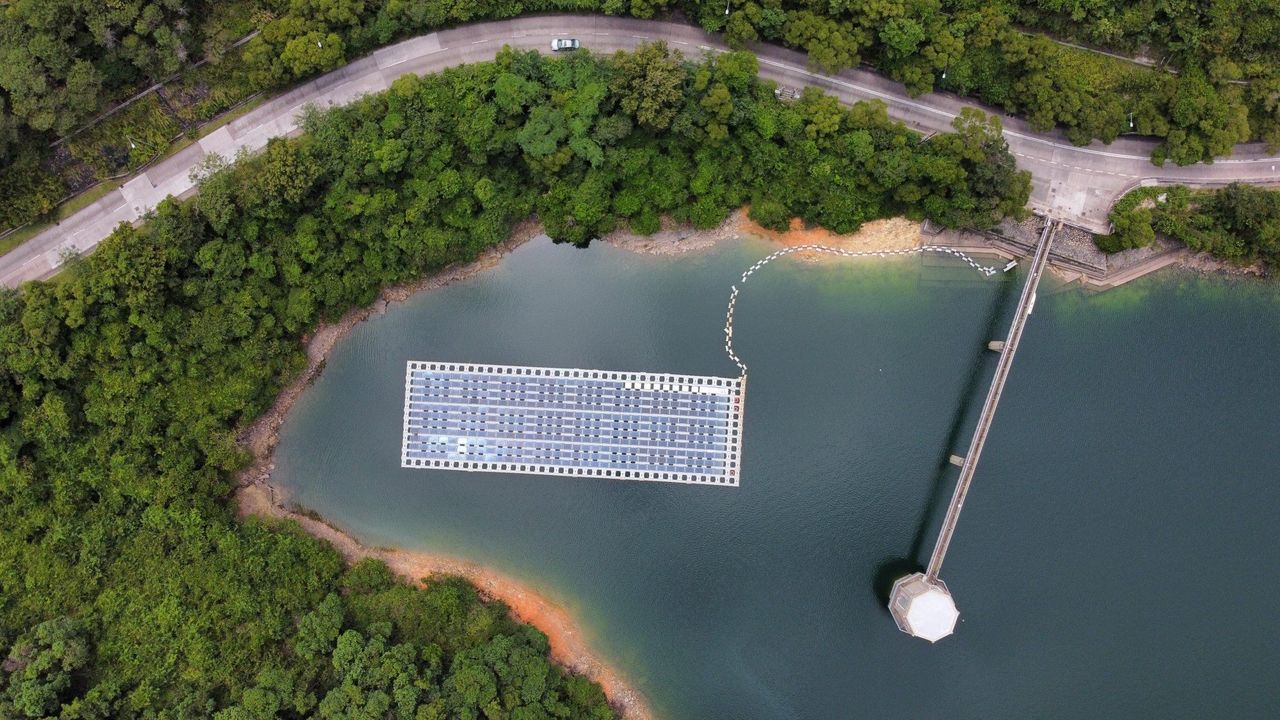Hong Kong News

With mainland help, Hong Kong can make a big push on solar energy
As part of his latest budget, Financial Secretary Paul Chan Mo-po announced that, to alleviate the burden on Hong Kong citizens, the government will provide a HK$1,000 (US$127) electricity subsidy per eligible household. It will also extend the existing relief of HK$50 a month to each account until the end of 2025.
However, in the long run, relying solely on subsidies to alleviate high electricity prices is a “lose-lose-lose” situation for the government, the general public and the environment. It also does not achieve the goal of building a community with a shared future for mankind, as proposed by President Xi Jinping.
Instead, Hong Kong should expand its supply of low-cost green energy. From a national perspective, solar power generation is a better solution.
At Tesla’s Investor Day earlier this month, CEO Elon Musk proposed “Master Plan 3”, which aims to push sustainable energy to the forefront. The plan includes building more renewable energy generation facilities, including solar and wind power, and increasing global solar and wind power generation to 30 TWh, using only 0.2 per cent of the world’s land area as infrastructure to achieve worldwide self-sufficient green power.
Hong Kong can explore opening up more green power cooperation with suppliers and introduce mature photovoltaic solar power generation technology and equipment from the mainland to achieve the goal of self-sufficient power generation. The government can also continue to support solar energy use through the feed-in tariff scheme.
Hong Kong’s current electricity generation mainly relies on natural gas, nuclear power and coal-fired power plants. Taking CLP’s 2020 fuel mix as an example, natural gas accounted for 48 per cent, nuclear power accounted for 36 per cent, coal accounted for 15 per cent and renewable energy accounted for only 1 per cent.
In 2021, the government released Hong Kong’s Climate Action Plan 2050. It proposes to increase the proportion of renewable energy in the city’s energy mix to between 7.5 per cent and 10 per cent by 2035 or earlier.
In last year’s policy address, the government also proposed more incentives to encourage the development of renewable energy in Hong Kong, establish communication mechanisms with relevant ministries and commissions in the central, Guangdong and Macau governments to coordinate carbon reduction efforts in the Greater Bay Area and achieve carbon reduction targets.
Secretary for Environment and Ecology Tse Chin-wan said in response to a question from a legislator on March 15 that the government would not rule out purchasing any type of zero-carbon energy from the mainland and would explore the possibility of cooperating to develop nearby zero-carbon energy projects.
According to Hong Kong Legislative Council member Kenneth Lau Ip-keung’s questioning during a council meeting last June, the feed-in tariff scheme expires at the end of 2033. Some citizens are worried they might not be able to recover their costs and are thus reluctant to participate in the scheme.
If the scheme is not extended beyond 2033, this would go against the 2022 policy address’ intention to encourage the development of renewable energy in Hong Kong.
Therefore, the government should extend the Scheme of Control Agreements it has signed with the two power companies to 2050 and provide more subsidy or loan schemes to help private buildings and industrial buildings install solar panels on their rooftops. Additionally, the government should make good use of vacant rural land to set up solar farms.
In addition, the government should explore more cooperation with power suppliers and the Greater Bay Area, work with the mainland on solar power supply and set up more solar facilities in new development areas and the Northern Metropolis.
 The Water Supplies Department has installed small floating solar farms
at the Shek Pik and Plover Cove reservoirs to collect data for similar
large-scale projects in the future in Hong Kong.
The Water Supplies Department has installed small floating solar farms
at the Shek Pik and Plover Cove reservoirs to collect data for similar
large-scale projects in the future in Hong Kong.
As climate change becomes more severe, clean energy and sustainable development have become a global consensus. The solar energy industry has become a powerful competitor to traditional energy sources given the gradual maturity of its technology and the decline in prices.
China’s solar power generation industry has already taken a leading position in the global market, providing important support for achieving the transition to renewable energy.
By collaborating with Chinese solar energy companies to introduce the technology and share resources, improve the efficiency and quality of solar energy and reduce costs, further promotion of Hong Kong’s solar energy industry can achieve sustainable energy development and reduce electricity prices.











